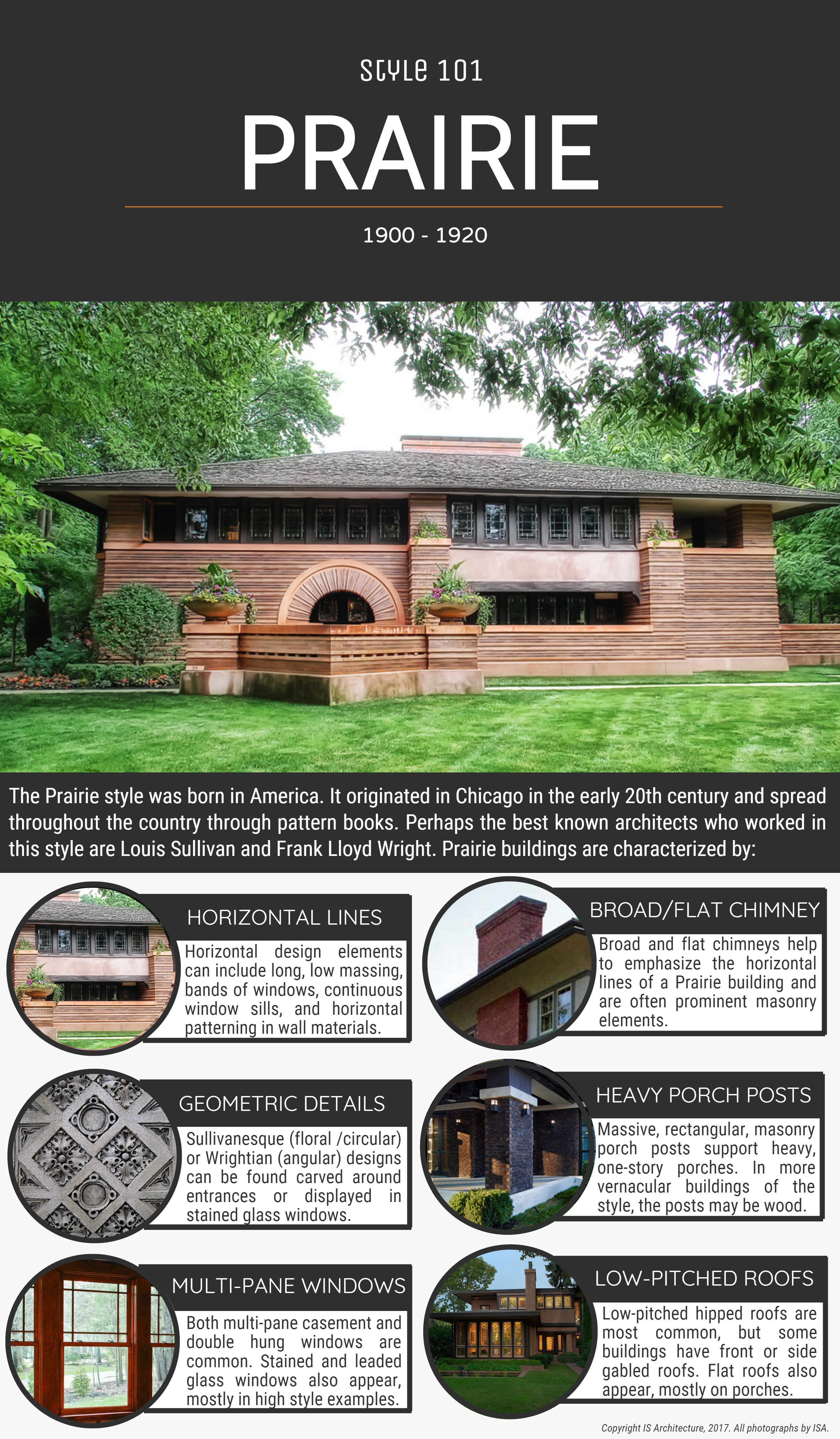Style 101: Prairie
The Prairie style is one of the few American-born styles of architecture. The precursors to the Prairie style originated in Chicago with the (appropriately-named) Chicago School of architecture. This Chicago School was not a physical school but rather a movement connected to the work of such well-known architects as William Le Baron Jenney, H.H. Richardson, Daniel H. Burnham, John Wellborn Root, Dankmar Adler, and Louis Sullivan. These architects were instrumental in the development of the first skyscrapers, as well as the eponymous Richardsonian Romanesque architectural style.
The work of this Chicago School can be considered a direct influence on what would become the Prairie style. Both Chicago School and Prairie architecture depart from the stylistic precedents of the past, using straight lines, blocky massing, and selective decorative elements. The most important connection between the two, however, is Frank Lloyd Wright. Wright’s portfolio has made him a household name, but did you know that Wright worked for prominent Chicago School architects Adler and Sullivan? After Wright left the firm of Adler and Sullivan (on bad terms, as the legend goes), he shared a studio space in Chicago with Robert C. Spencer, Jr., Myron Hunt, and Dwight H. Perkins. Together, the four young architects created the Prairie School of architecture by combining elements of Sullivan’s philosophies and the Arts & Crafts (Craftsman) movement.
The Prairie style was most popular in the first two decades of the 20th century, although some new construction in the style can be found. Despite the highly publicized work of Frank Lloyd Wright and other Prairie School architects, the style’s short heyday means that Prairie style architecture is comparatively rare. Additionally, the fact that Prairie architecture is associated with prominent architects means that more architect-designed, high-style examples were constructed than vernacular ones. Prairie architecture did not spread through catalogues or pattern books like the Craftsman or various revival styles did and accordingly most well-known examples are located in the Midwestern United States. Moreover, the style shares so many characteristics with the Craftsman style that it can sometimes be difficult to tell if a building is purely one style or the other!
There are over 100 Prairie style historic resources designated in San Diego. Could yours be next? Check out our handy infographic below to see if your house features the defining characteristics of the Prairie style!


